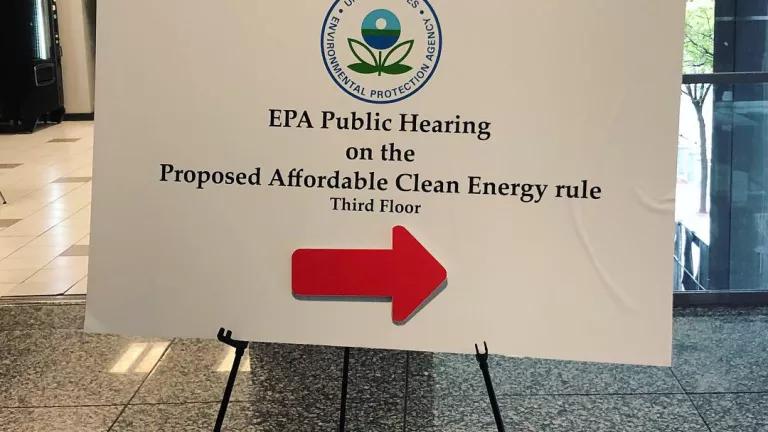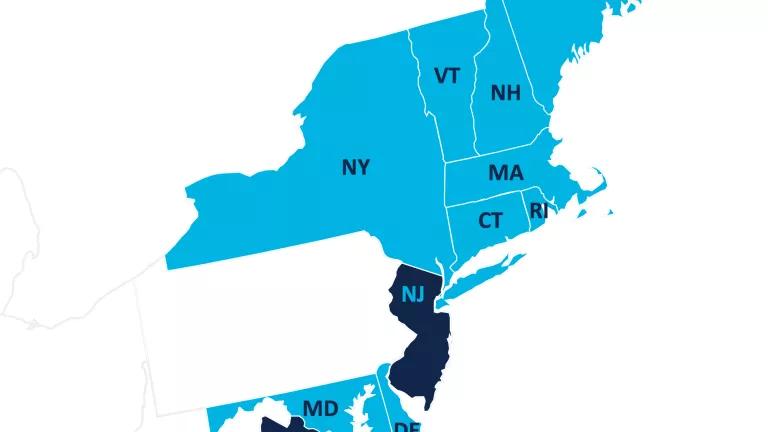Trump’s Budget Promotes a Dystopian America

This week, President Donald Trump released his FY 2019 Budget proposal that includes deep cuts to many key federal agencies, and an increase in funding for the Pentagon and $18 billion for a wall on the Mexican border.
The 2019 budget proposal largely resembles the skinny budget Trump proposed last year and continues to underscore his priorities to defund and eliminate core institutions of government that protect our environment, support our health care and provide critical investments to maintain what affordable housing that exist. In total, this budget proposes to cut all non-defense discretionary spending, by more than 40 percent. To achieve such a massive cut, Trump proposes steep reductions in budgets for government agencies like the Environmental Protection Agency, Housing and Urban Development, Department of Energy. Low income families are most harshly targeted by the proposed cuts to safety net programs like the Low Income Home Energy Assistance Program (LIHEAP), Weatherization Assistance Program (WAP), Head Start, Medicaid and many others.
While the budgets that any president proposes to Congress is aspirational rather than a formal policy, we should understand the President’s budget is one of the best reflections of an administration’s fiscal and programmatic vision for the country. The vision represented by Trump’s first full budget proposal to Congress promotes a dystopian America and follows themes that should be familiar to us all. A dystopian society is one that is dysfunctional leading to the suffering of the majority of people due to its inability or unwillingness to provide for the needs of society.
Trump’s Environmental Dystopia
The topic of environmental destruction central to dystopian literature and Trump’s budget does not disappoint. Core among the president’s messaging has always been in disbelief in the science concerning climate change and his desire to roll back clean air, clean water and other protections that enhance our environment and human health.
One of many low lights from Trump’s budget is the $1.9 billion he wants to eliminate from the Environmental Protection Agency. These cuts would reduce funding for the EPA by more than one-third, including ending the Climate Change Research and Partnership Programs.
While President Trump mockingly joked about the fact that the East Coast could be facing "the COLDEST New Year's Eve on record" and he poked fun at scientists who say the earth, in general, is getting warmer. This while the Department of Energy even before the cold snap warned that heating costs were going to track upward. The rising seasonal energy burden, caused by higher prices and higher energy usage would be felt by all Americans, especially those who struggle to stay warm due to the combination of poverty and inadequate housing.
In response to the challenges faced by many American households, President Trump’s proposed budget would eliminate the $3.39B Low Income Home Energy Assistance Program (LIHEAP) from the Department of Health and Human Services budget. The budget would also eliminate the Department of Energy’s (DOE) Weatherization Assistance Program (WAP) and State Energy Programs (SEP) respectively. Indeed, the FY2019 Congressional budget request by DOE zeros out both the WAP and SEP due to; “a departmental shift in focus away from deployment activities and towards early-stage R&D.”
At a time with energy cost are rising for the typical American family, it’s particularly egregious that the poorest and most vulnerable members of our society are often the target of his ire and bear the brunt of the proposed cuts in the President’s budget.
In fact, recent analysis by the US Energy Information Agency Residential Energy Consumption Survey (RECS) found that one in three American households where “energy insecure” and faced difficulty paying their utility bills or difficulty in maintaining adequate heating and cooling in their home in 2015. This is happening even as total expenditures on energy are at the lowest levels in a decade.
Further, the US Energy Information Agency (EIA) estimated that 1 in 5 households has to forego/reduce food and medicine spending to pay energy bills at least one month a year and that over 10 percent of households could not use heating and/or cooling equipment at least one month during the year due to cost concerns. Similarly, 14percent of American households reported receiving a disconnection notice for energy service, and once in arrears, utility service cost increase to either avoid disconnection or to restore services once they’ve been shut off.
The EIA’s RECS questionnaire is a great resource as it captures both the occurrence of household energy insecurity and the severity of household energy insecurity, measured by the frequency of energy insecure events lasting anywhere from a few weeks to most of the year. In 2015 the survey found that of the 25 million households that reported forgoing food and medicine to pay energy bills, 7 million faced that decision nearly every month. Of the 17 million households who reported receiving a disconnection notice, at least 2 million answered that this occurred on nearly a monthly basis.
These results match a study NRDC released a year ago in partnership with the American Council for an Energy Efficiency Economy, titled, “Lifting the High Energy Burden in American’s Largest Cities”.
This study found for example that low-income households—many of whom live in older housing with poor ventilation and aging, inefficient appliances and heating systems—spend, on average, 7.2 percent of their income on utility bills, which amounts to about $1,700 annually out of $25,000 in median household income. That is more than triple the 2.3 percent spent by higher-income households for electricity, heating and cooling.

The marginalization and crowding of low income families to areas where they are forced to rely on older, inefficient housing with outdated appliances, heating and cooling systems only adds to the burden of cost by increasing the likelihood of maintenance disruptions. Because of this, households may lose the use of heating or air-conditioning equipment entirely. This can occur when equipment breaks and a household cannot afford to fix it, as well as when a household cannot afford fuel for their equipment. This creates additional vulnerabilities to increasing poor indoor air quality, higher rates of home heating fires and other calamities that befall families trying to make due with inadequate housing.
Weatherization Assistance and LIHEAP programs are a critical lifeline to many families. Don’t allow Trump to roll out his fiscal agenda on the backs of America’s elderly and poorest families.
Protect WAP and LIHEAP from Trump’s dystopian America and show them a safer, more sustainable future is possible.


